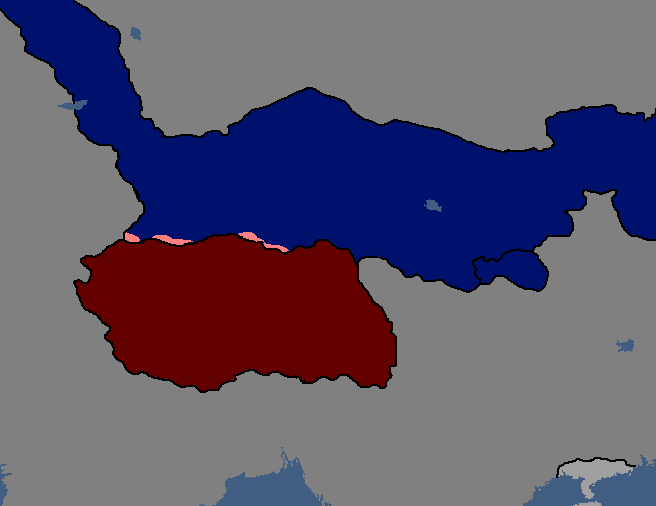Third Sizzlean-Utsongan War
| Third Sizzlean-Utsongan War | |||
|---|---|---|---|
 | |||
| Video | https://www.youtube.com/watch?v=oPwfuEMg9AU | ||
| Date | 97 CE | ||
| Location | East Asia | ||
| Outcome | Sizzlean Victory | ||
| Major Battles |
| ||
| Combatants | |||
| Commanders | |||
After recently having unsuccessfully demanded reparations from Sizzle, Utsong had had enough and launched a surprise invasion of Sizzle under the pre tense of revenge for the actions of the Sizzlean-Yetian Empire, rushing across the borders with its new cavalry army. Utsong rushed through the Taklamakan desert with relative ease, though this distraction allowed Sizzle to muster its forces after an initial bombing campaign, allowing it to convince Yetia to support them in the war and to organize a tank army to push back the Utsongans.
While Utsong did put up a good fight, the Sizzlean tanks demolished the invasion of Taklamakan due to its flat terrain, leading to Utsong shifting its focus to an attack on Xining. While Utsong had some initial success in the battle, a sudden counterattack by Sizzle lead to its army being outnumbered and forced back. Angered by Utsong's repeated defeats, the '97 Kham Uprising began in order to overthrow the imperialist ideology of the Khanate and restore theocratic rule, soon signing an alliance with Sizzle in which the rebels would gain control over the country in return for friendly relations, while the NLE also supported the rebels. Fearing imminent defeat, the Utsongan army began displaying the corpses of killed Sizzlean combatants on pikes in order to demoralize the enemy, which was largely unsuccessful as Sizzle heavily relied on bombing campaigns in Utsongan core territory. Most of Utsong's army had been captured or killed at this point, leading to them retreating into a perimeter around the city of Lhasa to hold a last stand. After a long and deadly battle, the Siege of Lhasa came to a close in a victory for Sizzle and the Rebels, whom were granted control over Utsong as the Theocracy of Utsong was established. Despite his defeat, Songsten Khan was allowed to retain his position as a ceremonial monarch, though his title was changed to that of a King instead of a Khan.